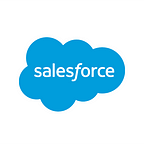Benioff Unveils Customer Success Platform in Dreamforce Keynote
Salesforce CEO introduces Analytics Cloud and new UI
By Laura Fagan
A traditional Hawaiian blessing and song, plus a surprise performance by The Beach Boys kicked off the second afternoon of Dreamforce 2014. But neither took place simply to entertain the audience. Both were intended to highlight the arrival of Salesforce’s newest innovation, detailed by Chairman and CEO Marc Benioff.
Giving Back
In the spirit of Salesforce and in keeping with one of Dreamforce’s three key themes, Benioff first touched on the philanthropy accomplished over the years as a result of the company’s 1–1–1 model: donating 1% of time, 1% of equity, and 1% of product.
The result thus far has been 680,000 volunteer hours donated, $68 million in grants, and 23,000 nonprofit organizations using Salesforce’s software at no cost. “Nothing is going to make you happier in your life than giving,” Benioff said.
He then welcomed San Francisco Mayor Ed Lee and leaders from the San Francisco Unified School District to discuss a Salesforce-supported fund to help the city’s students become the next generation of innovators. “My dream is for all 57,000 of SFUSD school kids to have an opportunity to work for tech companies,” said superintendent Richard Carranza.
SFUSD Superintendent Richard Carranza, who appeared onstage with Benioff, noted that in a world where every company is becoming increasingly focused on customer success, “Our customers are our students and our teachers.”
The Customer Success Platform
It was a perfect segue to Benioff’s first big reveal: the new positioning of Salesforce as The Customer Success Platform.
Every industry is being disrupted by technology. Everyone and everything is being connected by the mobile and social revolution, plus billions of applications. As a result, a sea of data exists unlike anything we’ve ever seen.
The systems currently in place aren’t capable of recognizing or managing that information. There is a divide, with customers and the connected devices they use on one side, and companies on the other side.
“For all of our companies, there’s an imperative of engagement, an imperative to connect,” Benioff said. “Our vision at Salesforce is simple: to build that customer success platform.”
Salesforce’s new Customer Success Platform bridges the gap by offering fully connected mobile and social tools powered by the cloud. Companies can employ this revolutionary technology to better connect to their customers through sales, customer service, marketing, communities, apps — and now, analytics.
“There is a huge opportunity for a wave of innovation,” Benioff said. “What we need is a wave.”
Wave: The Salesforce Analytics Cloud
Enter Wave, the new Analytics Cloud — “analytics for the rest of us,” with an elegant user interface designed to make interpreting and using business data easier and more intuitive than ever before.
Wave gives business users the ability to explore, collaborate around, and discover new insights and opportunities from the data being generated by billions of devices and trillions of interactions.
As an integrated part of the Customer Success Platform, Analytics Cloud offers a dynamic user interface, indexed search, and parallel processing. It is also fully mobile and is now available for download from the Apple App Store.
Salesforce1 Lightning
Benioff also shared that along with the ability to manage waves of data, companies must be able to build apps faster to keep up with demand. With that, Salesforce Co-Founder Parker Harris arrived on the keynote stage dressed as “Lightning Man.” His big announcement? The next version of the Salesforce1 Platform, Salesforce1 Lightning.
Harris said that he has “superpowers,” also known as the Salesforce developers. But most companies don’t have that kind of access. Lightning allows developers and business users everywhere to build apps at the speed of light in three ways.
First, it gives them what they need, including components, frameworks, and visual tools. Second, users can run those apps within the Salesforce1 Mobile App. Third, Salesforce1 Lightning features a new mobile user interface, soon to also be available on tablets and desktops.
Laura Fagan is a Brand Journalist at Salesforce. This post originally appeared on salesforce.com.
